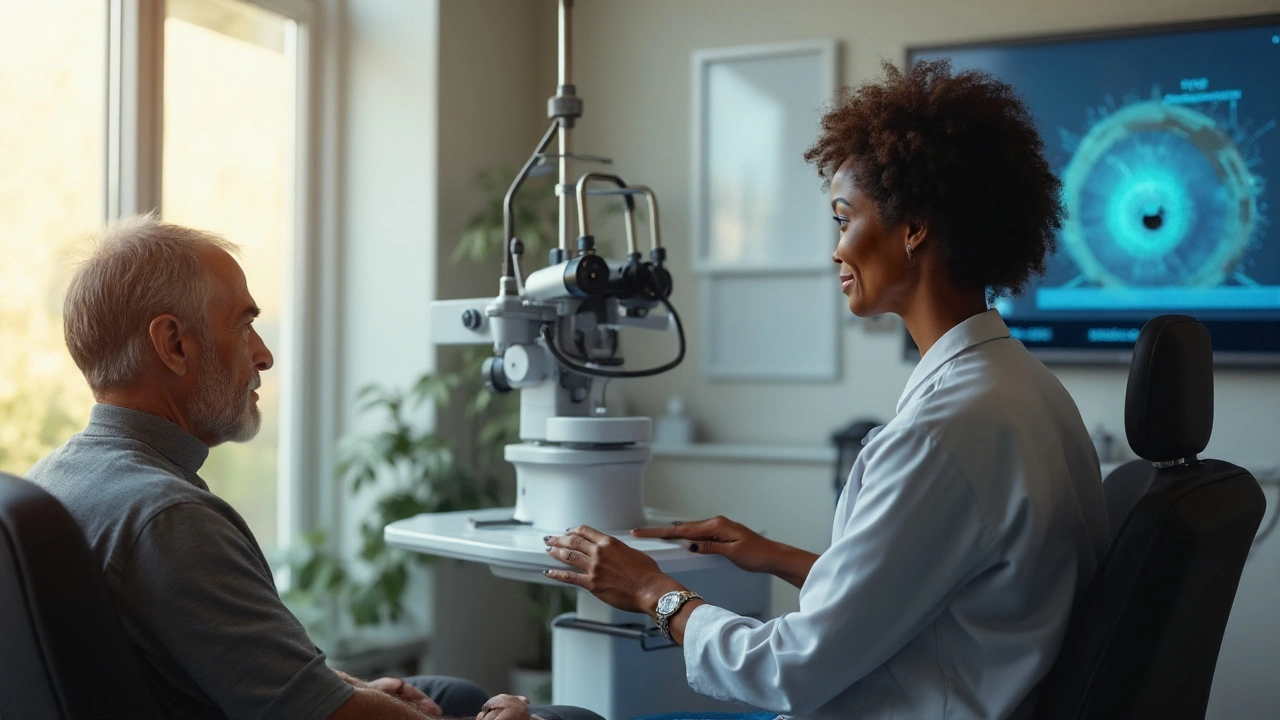
Betaxolol Guide: Long‑Term Glaucoma Management
A comprehensive guide to Betaxolol, covering how it lowers eye pressure, long‑term monitoring, side‑effect management, and how it stacks up against other glaucoma drops.
If you just heard the word glaucoma, you might think it’s a scary, untreatable disease. The truth is, most people keep their vision safe with the right treatment plan. The goal of any glaucoma treatment is simple: lower the pressure inside the eye and protect the optic nerve. Below you’ll find the most common ways doctors do that, plus real‑world tips you can use right away.
Eye drops are the first line of defense for almost everyone with glaucoma. They work by either reducing the amount of fluid your eye makes or helping it drain faster. The most common classes are prostaglandin analogs (like latanoprost), beta‑blockers (such as timolol), alpha agonists, and carbonic anhydrase inhibitors. Most people need just one drop a day, but some may need a combo bottle if a single drug isn’t enough.
Side effects are usually mild. Prostaglandin drops can cause a darker ring around the iris or extra hair growth on the eyelid. Beta‑blockers may make your heart feel slower, so let your doctor know if you have asthma or heart problems. If you notice persistent redness, stinging, or blurry vision, call your eye care professional – a simple switch to a different formula can fix it.
Adherence is the biggest hurdle. Skipping drops even once can raise eye pressure within a few days. Set an alarm, keep the bottle where you brush your teeth, and ask your pharmacist for a refill reminder. Some pharmacies even offer a tiny pill‑type dispenser that tracks each dose for you.
If drops aren’t enough, doctors turn to laser or surgery. Laser trabeculoplasty is an outpatient procedure that opens up the drainage canals with a quick burst of light. The whole thing takes less than ten minutes, and most people go home the same day. It’s not a cure, but it can lower pressure for years and often reduces the number of drops you need.
For more advanced cases, surgery may be recommended. The classic option is trabeculectomy, where a tiny flap is made to let fluid escape. Newer, less invasive procedures like minimally invasive glaucoma surgery (MIGS) use tiny stents to improve drainage with a shorter recovery time. Recovery varies, but you’ll usually need a few weeks of eye drops to keep inflammation down.
Post‑op care matters. Keep the eye shield on as instructed, avoid heavy lifting, and use prescribed drops exactly as directed. Follow‑up appointments let the surgeon check pressure and make sure the eye is healing properly.
Living with glaucoma also means lifestyle tweaks. Exercise like walking or swimming can help lower overall blood pressure, which indirectly supports eye health. Wear sunglasses that block UV light – they protect the eye’s surface and reduce overall stress.
Finally, stay on top of eye exams. Even if your pressure looks good, the optic nerve can still change. Most eye doctors recommend a check‑up every three to six months for the first few years, then yearly if everything stays stable.
Bottom line: glaucoma is manageable when you combine the right medication, timely laser or surgery, and everyday habits that keep your eye pressure in check. Talk openly with your eye care team, ask about side effects, and stick to the plan – your vision will thank you.

A comprehensive guide to Betaxolol, covering how it lowers eye pressure, long‑term monitoring, side‑effect management, and how it stacks up against other glaucoma drops.